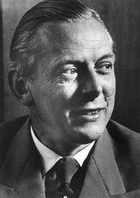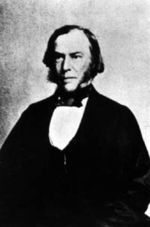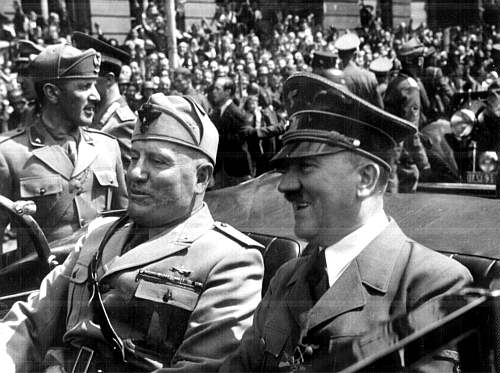Entries Tagged as 'Testosterone'
Back to Intro Chemistry of Testosterone Historical Significance
Discovery and Synthesis
The Future of Testosterone
Works Cited
Berthold, A.A. 1849. Transplantation of tests. Trans. By D.P Quiring. Bull. History
Med., (1944) 16:42-46.
Cohen, Jeffrey, and Bonnie Wheeler, eds. Becoming Male in the Middle Ages. New York
and London: Garland, 1997.
Djerassi, Carl. Steroids Made It Possible. Washington, DC: American Chemical Society,
1990.
“DOCTORS WHO DISAGREE.; THE BROWN-SEQUARD ELIXIR DIVIDES THE
MEDICAL PROFESSION.” The New York Times 23 Aug. 1889: 2.
Freeman, E., D. Bloom, and E. McGuire. “A Brief History of Testosterone.” The Journal
of Urology 165 (2001): 371-373.
Guthrie, Marisa. “Napoleon Complex; Bonaparte’s Genius is Brilliantly Captured.” The
Boston Herald 8 Nov. 2000.
Greene, Kelly. “When We’Re All 64.” The Wall Street Journal 26 Dec. 2005.
Hoberman, J. M., and C. E. Yesalis. “The History of Synthetic Testosterone.” Scientific American (1995): 76-81.
Hendrickson, James B. The Molecules of Nature. New York: W. A. Benjamin Inc., 1965.
Hoffman, Roald. “For a Few Atoms More.” American Scientist 96 (2008): 104-106.
Klotz, Fia. “Anabolic Androgenic Steroids and Criminality.” Uppsala Dissertations (2008).
Koert, William, comp. About the Anabolics Book. 14 Sept. 2006. 8 May 2008 <http://www.ergogenics.org/anabolenboek/index0en.html>.
Leopold Ruzicka. 13 September 1887-26 September 1976
Morley, J., H . Perry. “Androgen deficiency in aging men: Role of testosterone
replacement therapy.” Journal of Laboratory and Clinical Medicine ,Volume 135 , Issue 5,(2000): 370 – 378.
Russell, Cheryl. 100 Predictions for the Baby Boom. New York and London: Plenum P,
1987.
Strauss, Richard H., ed. Drugs and Performance in Sports. Sydney, Australia: W.B.
Saunders Company, 1987.
Taylor, William N. Anabolic Steroids and the Athlete. London: Macfarland and
Company, 1982.
Voy, Robert. Drugs, Sports. and Politics. Champign, Illinois: Leisure P, 1991.
Watts, Janet. Drugs, Steroids and Sports. New York: Franklin Watts, 1988.
Wilson, Jean D., and Claus Roehrborn. “The Long-Term Consequences of Castration in
Men.” The Journal of Clinical Endocrinology & Metabolism 84 (1999): 4324-4331.
Zimmerman, Frank. “Origin and Significance of the Jewish Rite of Circumcision.”
Psychoanalytic Review 38 (1951): 105-114.
[Read more →]
Categories: Testosterone
April 25th, 2008 · 1 Comment
Back to Intro
Chemistry of Testosterone Discovery and Synthesis Historical Significance
Anabolic Steroids
References
Steroids in professional sports
-congressional hearings
-asterisks in the record books
-who to blame?
Impact on the youth
-role models
-high school use
Medicinal Use
[Read more →]
Categories: Testosterone
April 25th, 2008 · Comments Off on Androgen Receptor
Back to Chemistry of Testosterone
The main function of the androgen receptor is to transcribe DNA into m(essenger)RNA which regulates gene expression.

[Read more →]
Categories: Testosterone
Stacking Increases the Likelihood of Acne

Back to Anabolic Steroids
[Read more →]
Categories: Testosterone
Categories: Testosterone
Introduction to Testosterone Chemistry of Testosterone Future
Historical Significance Discovery and Synthesis
References

-Scientists in the 1930s discovered that anabolic steroids could facilitate the growth of skeletal muscle in laboratory animals
-This breakthrough led to abuse of these compounds by bodybuilders and weightlifters and then by athletes in other sports.
Adminstering Anabolic Steroids
-orally, injected intramuscularly, or rubbed on the skin when in the form of gels or creams
-these drugs are often used in patterns called cycling, which involves taking multiple doses of steroids over a given time period, stopping for a period, and then beginning again.
-Users combine several different types of steroids in a process known as stacking; the belief is that a variety of steroids will produce an effect on muscle size that is greater but side effects will be decreased
-pyramidding an another common practice in which the user takes the highest level of steroid in the middle of a cycle and then decreases servings towards the end of the cycle
The effects
- ability to train harder.
- build muscle mass.
- help cut down on recovery time after strenuous exercise
Addictive Nature
-User can become psychologically dependent long before he or she becomes physically dependent
-Withdrawal symptoms including: headaches, lethargy and depression are common
Steroid Law
-Anabolic steroids are Class C drugs that can only be prescribed by a doctor.
-Importation of steroids is legal as long as they are only for personal use
-Importation with the intent to distribute is punishable by up to 14 years in prison
[Read more →]
Categories: Testosterone
April 25th, 2008 · Comments Off on Butenandt and Ruzicka


Ruzicka Butenandt
Butenandt and G. Hanisch published a paper describing “A Method for Preparing Testosterone from Cholesterol.”
Ruzicka and A. Wettstein, announced a patent application in a paper “On the Artificial Preparation of the Testicular Hormone Testosterone.”
Their independent partial syntheses of testosterone from a cholesterol base earned Butenandt and Ruzicka each a share of the 1939 Nobel Prize for Chemistry.
Back
[Read more →]
Categories: Testosterone
April 25th, 2008 · Comments Off on Brown-Sequard
Back

Near the end of his life, he made and injected an elixir that was a liquid extract made from the testicles of guinea pigs and
dogs. Brown-Sequard said his formula increased his physical strength and intellectual prowess, relieved his
constipation, and even lengthened the arc of his urine.
[Read more →]
Categories: Testosterone
April 25th, 2008 · Comments Off on Historical Significance
Introduction to Testosterone Chemistry of Testosterone Discovery and Synthesis Anabolic Steroids
References
Cruel Male Leaders
Did heightened testosterone levels contribute to history’s villains?

Napoleon Complex
-The Napoleon complex is named after French Emperor Napoleon Bonaparte. Napoleon overcompensated for his short height (lack of testosterone) by seeking power, war and conquest.

Baby Boom
-The “golden age of testosterone reseach” coincides with the increase in newborn’s between 1946 and 1964
-Testosterone was synthetized as a fertility drug

[Read more →]
Categories: Testosterone
April 25th, 2008 · Comments Off on Discovery and Synthesis
Introduction to Testosterone Chemistry of Testosterone Historical Significance
Anabolic Steroids
The Future of Testosterone
References
Prehistory and Religious Doctrine
-Jewish Circumcision
-Egyptian Fertility Statues found in pyramids
The Middle Ages
-Human Castration
-Serendipitous Discovery that the Testes effect behavior, emotion and overall health
1849-Arnold Berthold
-experimentation of castration on chickens
1889-French Physiologist, Charles Edouard Brown-Sequard
“Rejuvenating therapy for the body and mind”
1918- Leo L. Stanley, resident physician of San Quentin State Prison in California
transplanted testicles removed from recently executed prisoners into inmates: some of whom claimed that they recovered sexual potency
1927- Fred C. Koch, University of Chicago’s Professor of Physiologic Chemistry
In 1927, Koch and his student, Lemuel McGee, derived 20mg of a substance from a supply of 40 pounds of buffalo testicles that, when administered to castrated roosters, pigs and rats, remasculinized them.
1934- Ernst Laquer
purified testosterone from bovine testicles
1935- Adolph Butenandt and Leopold Ruzicka
-funded by pharmaceuticals research labs in Germany and Switzerland respectively, joint synthesis
-the two share the 1939 Nobel Peace Prize
The early 1930s 1950s “The Golden Age of Steroid Chemistry”
Research proved that this newly synthesized compound — testosterone — was a potent multiplier of muscle, strength, and wellbeing.
[Read more →]
Categories: Testosterone










